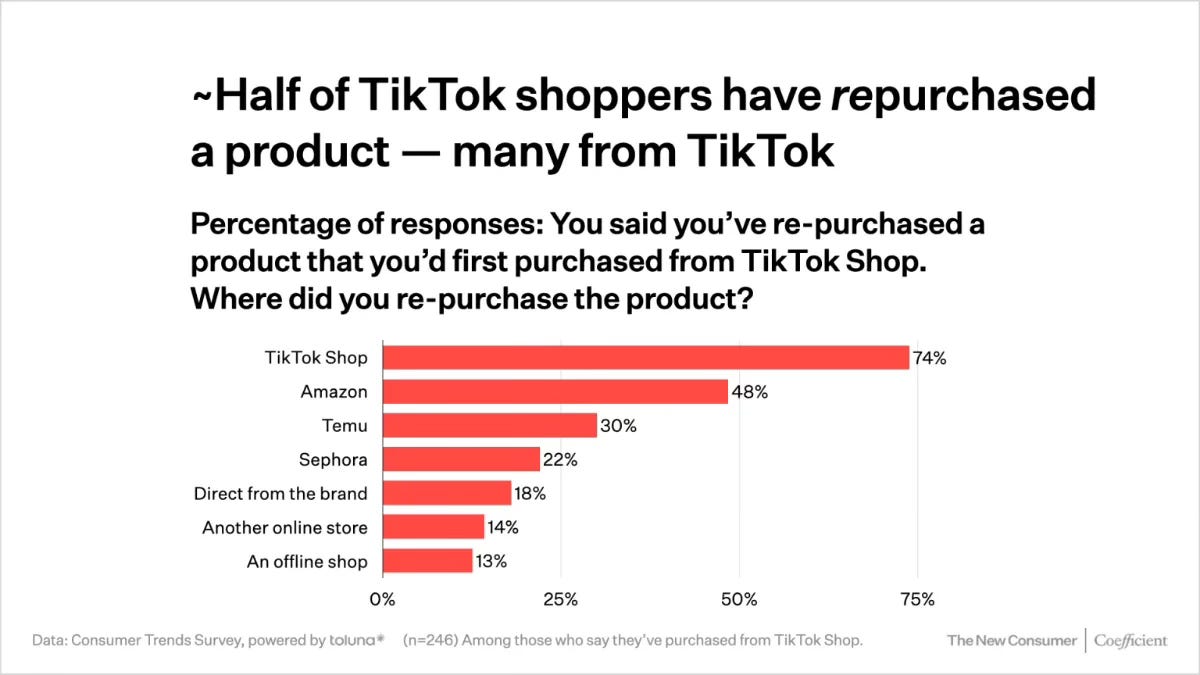The year of creator brands and what you can learn from them
Now 'healthy', ultra-processed, & ozempic-ready are here. Regenerative hangs in.
What we can learn from the uptick of creator brands is the power of audience. Pictured:
Khloud yet to launch snack brand by Khloe Kardashian and Kris Jenner
Unwell by Call Her Daddy podcaster Alex Cooper
Cloud23 by model and chef Brooklyn Beckham (and nepo child of David & Victoria Beckham)
Creator brands are different than celebrity brands in that they are developed and owned by individuals who have built their influence through digital platforms. What creators have that most of you don’t is an audience. Audience alone will not make a brand successful; brands must also have great products that solve real problems.
Brand = Need + Product + Audience
Audience are people who identify with your brand and buy it repeatedly.
I like the way Brian Tate (Oats Overnight) talks about it.
Creator brand launches will only increase in 2025, and lest you think a TikTok ban will slow them down, creators are posting workarounds (including downloading all of their TikTok content into a personal portfolio just in case).
Note that audiences are repeat buying like crazy onTikTok. This article is worth a read on repeat. From The New Consumer —
Other things you can learn from creator brands:
—> IRL - you don’t have to launch in brick-and-mortar to connect with audiences in real life. Experiences like run clubs, meet-ups, pop-ups and other events is where you and your brand should be showing up.
—> Close friends/clubs - create and use group chats on Geneva, Threads, or Substack chats to give your audience a sense of ownership and direct feedback.
—> Original creative content vs AI - let’s face it, super vulnerable behind-the-scenes got a little icky in 2024, and AI generated content was so easy to spot. Be real but inspirational with original content. Get people excited.
On to the News
FDA released its long-awaited final rule defining what foods can be marketed as “healthy.”
What now qualifies under the updated definition includes nuts and seeds, olive oils, higher-fat fish, like salmon, and eggs (which cost $9 now thanks to bird flu)
What no longer qualifies includes fortified white bread, highly sweetened yogurt, and highly sweetened cereal.
Ultra-Processed Foods are going down
Governor Newsom joins RFK in California cracking down on Ultra-Processed Foods which shouldn’t be too hard over here given that GLP-1 households (those with at least one person on a weight loss drug like Ozempic) already have a head start. According to this study, GLP-1 households spend less on groceries (duh), and mostly in ultra-processed categories.
Formulating for Ozempic times
Our industry bends over backwards to make healthier versions of beloved ultra-processed favorites. Big Food developer Mattson has been working on a slew of formations that answer for “ [can new products] break through Ozempic’s defenses and excite people whose relationship to food has been turned on its head?” (answer: yes), according to the NYT:
Will 2025 be the year for Regenerative?
California approved a definition of the term ‘regenerative’ yesterday. Here is a link to the draft that was approved. It’s a start! Note, however, that search activity for the term ‘regenerative’ is connected more to disease prevention and longevity (as in regenerative medicine) than food.
Food will get more expensive
Not just because of tariffs; but it will cost more to ship on ocean carriers —fees just went up through the Panama Canal.
And finally, my composting update
For Christmas Rex almost gifted me The Mill I wrote about before, but discovered it’s not actually a composter, and now I feel stupid. My expertise is knowing what problems companies are solving, and I got this one totally wrong. If you don’t plan on composting but want to reduce amount of food waste, or the number of trips taking out the trash, food recyclers like The Mill are for you.
All my best,
Jennifer








Hi Jennifer! Thanks for all your helpful content here. Thought of you recently when reading a few think pieces about packaging that "panders" to millennials with disposable income (e.g. Fishwife, Tom's recent rebrand, lots of RTE oatmeal...and all the creator brands you included here). Most of what I've read has been more from a culture writing perspective, and I'd really welcome your thoughts here as someone actually in the CPG industry! Let me know what you think:
https://maryahamin.substack.com/p/why-does-everything-look-infantilized
https://www.grubstreet.com/2023/01/why-every-shoppy-shop-looks-exactly-the-same.html
https://www.blackbirdspyplane.com/p/affluent-millennial-awesomesauce-packaging-whos-still-buying-this?r=9oeex